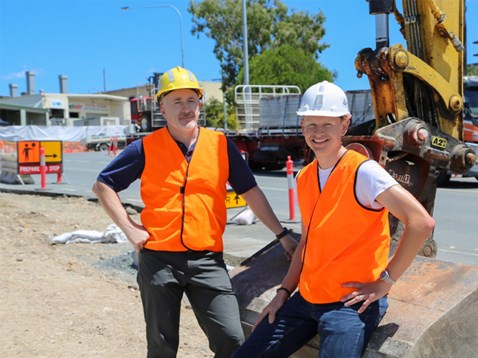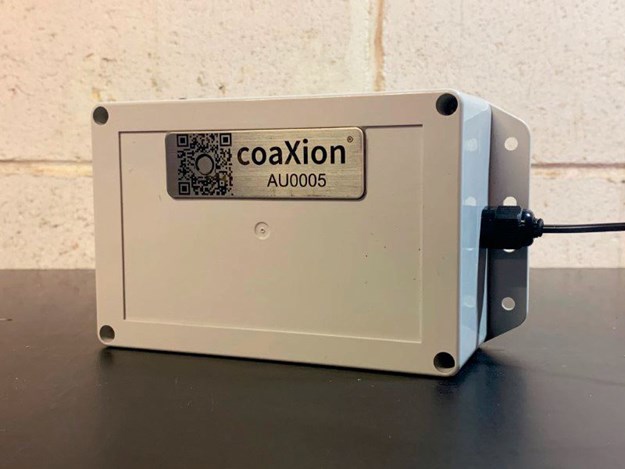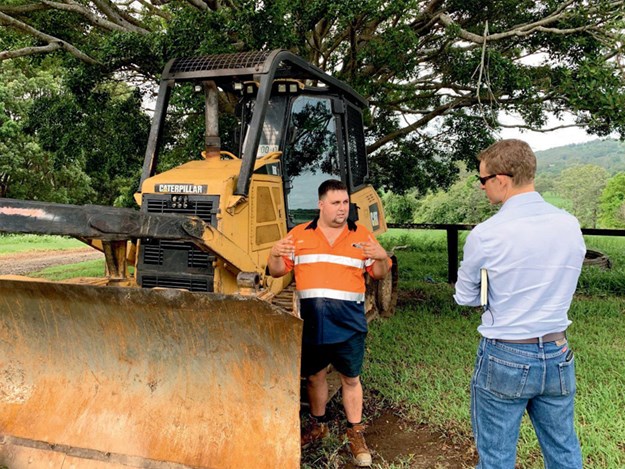Paying back machinery loans relative to a machine’s usage and degradation data is now an option thanks to a ‘world-first’ financing solution
 |
|
coaXion chief executive Colin Armbruster (left) and CTO and co-founder Chris Maycock
|
An Australian start-up is set to shake up the national equipment financing market with a new pay-as-you-use-it asset finance model.
Hailed as a ‘world-first’, coaXion has introduced a new pay-as-you-go financial repayment system, providing earthmoving operators with what it says is a more cost-effective and flexible way to make repayments on yellow goods purchases.
The model seeks to move away from traditional finance and leasing options used by the big banks to a more adaptable model based on one key ethos – if operators use the equipment mode, they’ll have the option to own it earlier. If operators use it less, their repayments are lower.
coaXion chief executive Colin Armbruster says the technology has the potential to disrupt the yellow goods financing market and places the power back in the hands of the operators.
“Our pay-as-you-use-it model allows the repayments to fluctuate based on the actual usage of the asset, eliminating the risk element that the traditional lender must factor in.,” Armbruster says.
“coaXion is able to do this thanks to our leadership team’s 30 years of heavy machinery industry experience and our proprietary hardware, software and machine learning models which provide our finance team with updated usage and residual value data throughout the finance term.”
Armbruster also says the model is in stark contrast to existing financial options from the banks – which are often labelled inflexible and can result in much higher repayments.
“Due to banks not knowing the condition of the asset during the term of the finance, they are forced to take a conservative view from a risk perspective,” he says.
“That position means banks have a conservative view of the residual value of the asset as well as inflexible fixed repayments for the borrower.”
 |
|
Usage data helps coaXion assess asset value
|
The system is attached to earthmoving equipment via a 12v system, with a small and discreet box installed under or behind the operator seat.
The technology has been developed over the past 18 months and has received over $2.65 million in Pre-Series A funding, which closed in March 2022.
Currently, coaXion’s technology systems and finance model are available for earthmoving operators that fit within the company’s credit policy, which is reasonably aligned with typical asset finance parameters in Australia.
While coaXion’s technology is currently only available for earthmoving equipment, the company says agricultural equipment will be next, followed by other sectors in later expansion phases.
 |
|
Repayments are based on usage and asset degradation
|
coaXion says customers have already taken up the offer to use their pay-as-you-use-it system which has led to sizeable savings in comparison to traditional financing models.
A dozer operator working on a showground rebuild in northern New South Wales lost two months’ work when his five-year old machine broke down. As he was using coaXion’s system, the repayments fell also, equating to approximately $3000 less during the period than he would have paid had he been using traditional finance.
“Any earthmoving business owner knows how painful this sort of delay is, and what a strong impact it has on cashflow. For this client, it meant he lost 235 hours of contract revenue,” Armbruster says.
“coaXion’s proprietary technology calculates repayments using usage and asset degradation data, so this customer was on a fixed minimum of $2950 per month (as opposed to conventional finance, which would charge approximately $6000 a month for leasing this machine).
“So, when our customer was out of action for two months, his repayments were $3050 less than traditional finance. This is a significant benefit for a small business.
Armbruster says that the system will put more money back into the pockets of operators – helping them to upscale their businesses, machinery fleets and the earthmoving and construction pipeline of the country.
“It’s really important to us that yellow goods business owners get a better deal for financing and operating their machinery,” he says.
“In the future, our technology will allow banks and non-bank lenders can reduce the effective interest rates that are charged as the lender can reduce the risk, they factor into their loan approval algorithms.
“Owners of yellow goods will be able to effectively access equity that they have built in their assets, simplifying and speeding up their access to short-term working capital needs.
“Large fleet operators will also be able to better manage large and complex balance sheets to ensure assets are best deployed into their operations in a way that maximises the companies’ return on the capital investments.”
For more information about coaXion, please visit coaxion.com

